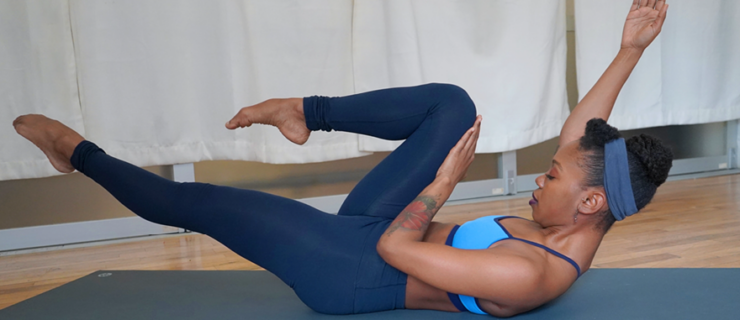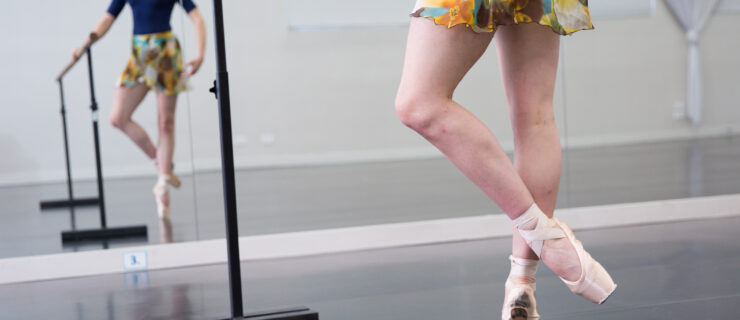Do Ballet Dancers' Brains Function Differently?
Five years ago, an idea popped into the head of longtime Ballet West patron and practicing psychologist Dr. Aharon Shulimson: “Do ballet dancers’ brains function differently than the rest of us?” Shulimson and his wife Julie Terry, president of the Ballet West Guild and Shulimson’s clinic’s technician, had recently conducted a study on ultra-marathon runners using a specialized brain imaging technique called Quantitative Electroencephalography, and were eager to try it out on dancers. Shulimson describes QEEG as the “human equivalent of taking your car into the shop and plugging it into the computer to see how it works.” The test allows Shulimson to compare an individual’s brain wave activity to statistical norms to see how it’s functioning. He stresses that the test isn’t designed as a means of diagnosis, but rather “to understand the neurological underpinnings of things like ADHD and anxiety.”
Last year Ballet West director Adam Sklute gave Shulimson and Terry permission to recruit dancers; 26 volunteered. For principal dancer Adrian Fry, the experiment gave him a chance to “enter a different world.” “People find dancers very fascinating,” says Fry. “I wanted to see if there was real evidence behind that.”
“We really had no idea what to expect,” says Shulimson. “There was no previous research to go on.” Shulimson does point out that the results certainly couldn’t be bad, as whatever’s going on in these dancers has enabled them to become successful in an incredibly competitive field.
 Retired Ballet West first soloist Elizabeth McGrath wearing an EEG electrode cap and ear electrodes for the study. Photo Courtesy of Aharon Shulimson.
Retired Ballet West first soloist Elizabeth McGrath wearing an EEG electrode cap and ear electrodes for the study. Photo Courtesy of Aharon Shulimson.
The Results
The results were surprising. More than 2/3 of the dancers in the study were found to have overactive brains with an excess of brain activity. “When I see that in my patient population, it’s usually affiliated with someone with anxiety disorder, someone with the tendency to overthink things, to hyperfocus,” says Shulimson. This brain type is also affiliated with sleep issues, as people in this group tend to have a harder time shutting their brains off at night. Shulimson said that a number of the dancers in this category did reveal that they have trouble sleeping.
The other third of participants were almost the exact opposite, characterized by an underactive brain with an excess of slower brain wave activity. This is most commonly affiliated with an ADHD diagnosis. “Patients who have that type of brain wave typically do well with interesting and stimulating situations. If someone is coming to set Serenade on you and that doesn’t focus you, you’re in the wrong line of work.”
Fry thought the results made sense. “I find dancers to be the most focused individuals, maybe on the planet. I think we’re just really excellent multitaskers. We process a lot of information and facts and are constantly combatting our own minds and the music and the steps and emotions; there’s a lot that goes into just taking a step onstage.”
 Shulimson and Terry at a Ballet West event. Photo Courtesy of Ballet West.
Shulimson and Terry at a Ballet West event. Photo Courtesy of Ballet West.
What’s Next
Though Shulimson and Terry presented their findings at the Association for Applied Psychophysiology and Biofeedback Conference in Chicago earlier this year, the duo needs to expand their sample size in order to validate and publish their results. Sklute and other Ballet West staff members are helping to connect Shulimson with other companies around the country. “If I could get San Francisco Ballet, Pacific Northwest Ballet or Boston Ballet to participate, I could die happy,” says Shulimson.
In the meantime, he’s been reading up on mental health concerns for dancers and is working to better understand his results. “Just based on the EEGs you’d expect anxiety disorders and some OCD type symptoms, which in a sense are helpful for dancers. You’ve got to be obsessed and on target 100% in ballet, or you’ll be replaced with someone who is.”
Authorship for the study attributed to Aharon D. Shulimson, Ph.D, M.S.C.P. and Julie Terry.





